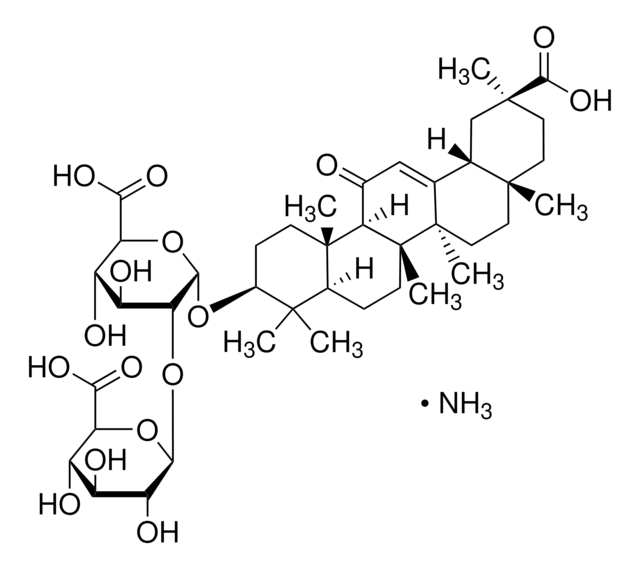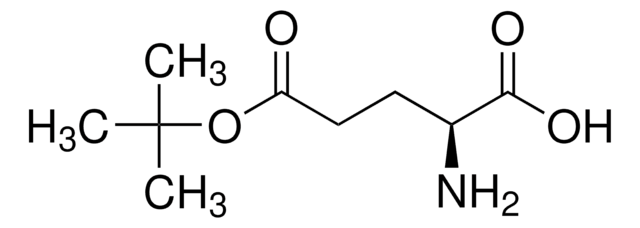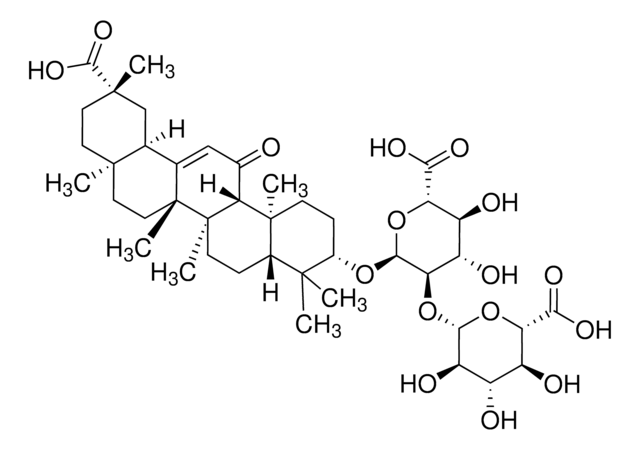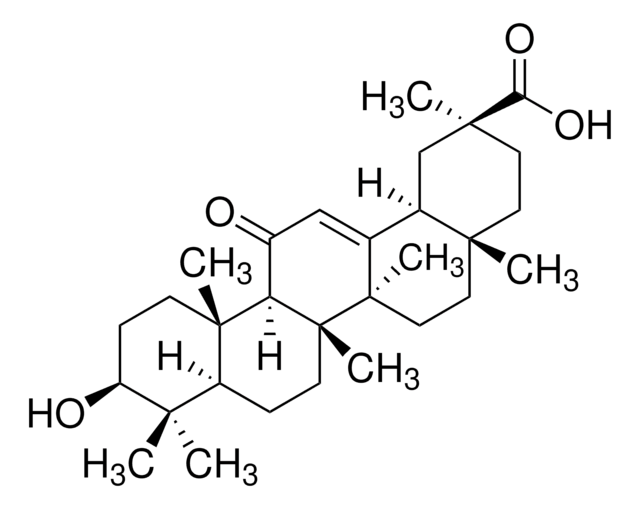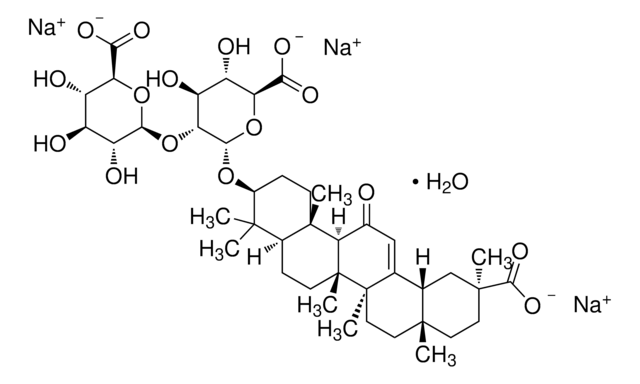50531
Glycyrrhizic acid ammonium salt from glycyrrhiza root (licorice)
≥95.0% (NT)
Synonyme(s) :
3-O-(2-O-β-D-Glucopyranuronosyl-α-D-glucopyranuronosyl)-18β-glycyrrhetinic acid ammonium salt, Glycyrrhizin
About This Item
Produits recommandés
Essai
≥95.0% (NT)
Activité optique
[α]20/D +48±4°, c = 1% in ethanol: water (1:1)
Sucrosité
50 × sucrose
Impuretés
≤7% water
Chaîne SMILES
N.CC1(C)[C@H](CC[C@@]2(C)[C@H]1CC[C@]3(C)[C@@H]2C(=O)C=C4[C@@H]5C[C@](C)(CC[C@]5(C)CC[C@@]34C)C(O)=O)O[C@H]6O[C@@H]([C@@H](O)[C@H](O)[C@H]6O[C@@H]7O[C@@H]([C@@H](O)[C@H](O)[C@H]7O)C(O)=O)C(O)=O
InChI
1S/C42H62O16.H3N/c1-37(2)21-8-11-42(7)31(20(43)16-18-19-17-39(4,36(53)54)13-12-38(19,3)14-15-41(18,42)6)40(21,5)10-9-22(37)55-35-30(26(47)25(46)29(57-35)33(51)52)58-34-27(48)23(44)24(45)28(56-34)32(49)50;/h16,19,21-31,34-35,44-48H,8-15,17H2,1-7H3,(H,49,50)(H,51,52)(H,53,54);1H3/t19-,21-,22-,23-,24-,25-,26-,27+,28-,29-,30+,31+,34-,35-,38+,39-,40-,41+,42+;/m0./s1
Clé InChI
ILRKKHJEINIICQ-OOFFSTKBSA-N
Vous recherchez des produits similaires ? Visite Guide de comparaison des produits
Catégories apparentées
Actions biochimiques/physiologiques
Mention d'avertissement
Warning
Mentions de danger
Conseils de prudence
Classification des risques
Eye Irrit. 2
Code de la classe de stockage
11 - Combustible Solids
Classe de danger pour l'eau (WGK)
WGK 3
Point d'éclair (°F)
Not applicable
Point d'éclair (°C)
Not applicable
Équipement de protection individuelle
Eyeshields, Gloves, type N95 (US)
Faites votre choix parmi les versions les plus récentes :
Déjà en possession de ce produit ?
Retrouvez la documentation relative aux produits que vous avez récemment achetés dans la Bibliothèque de documents.
Les clients ont également consulté
Notre équipe de scientifiques dispose d'une expérience dans tous les secteurs de la recherche, notamment en sciences de la vie, science des matériaux, synthèse chimique, chromatographie, analyse et dans de nombreux autres domaines..
Contacter notre Service technique
